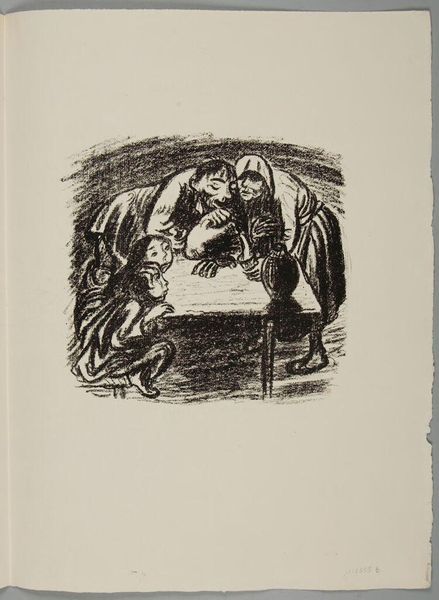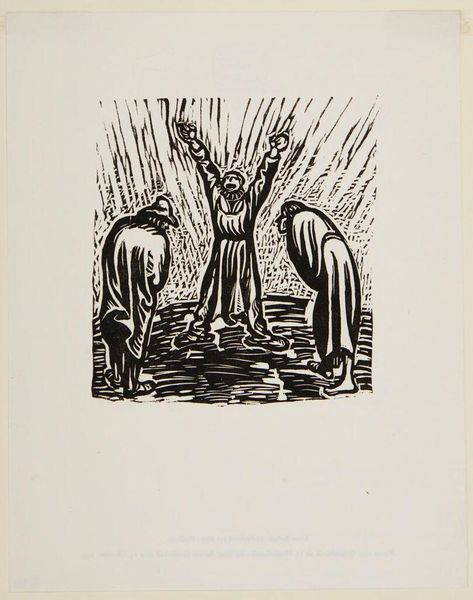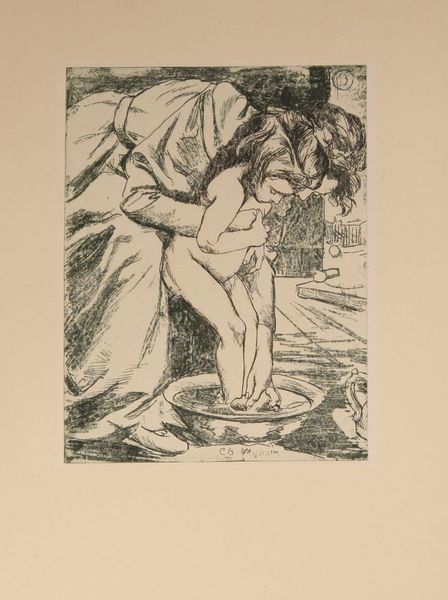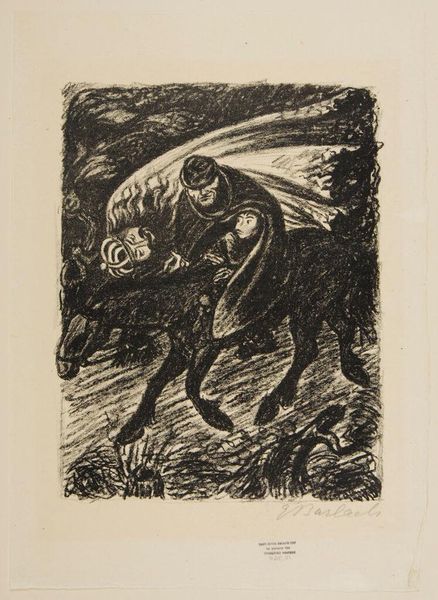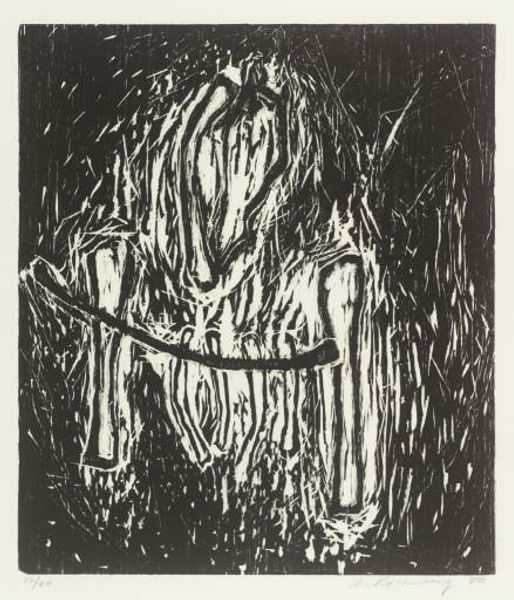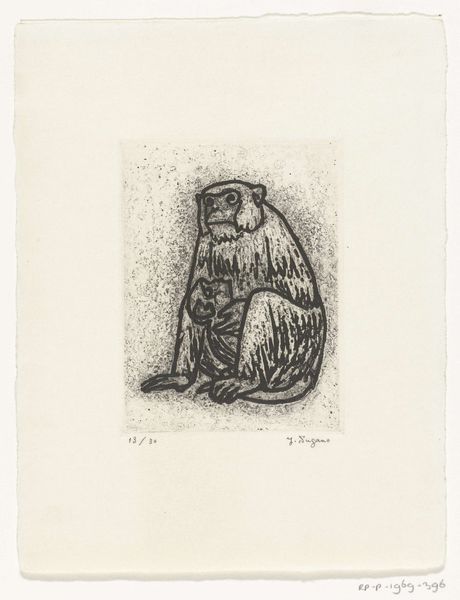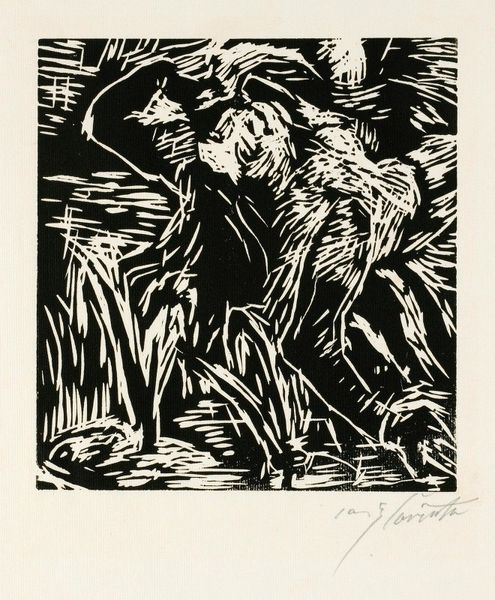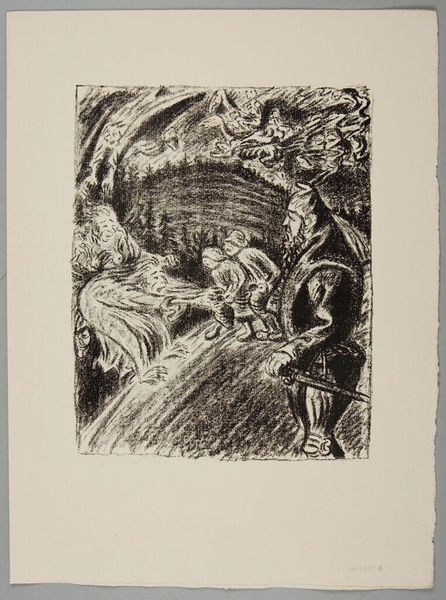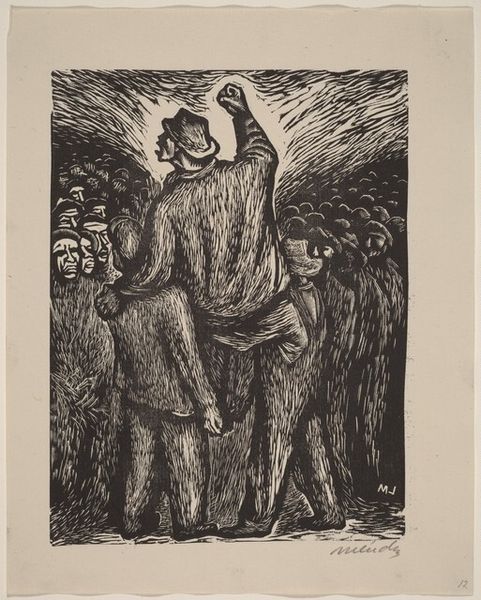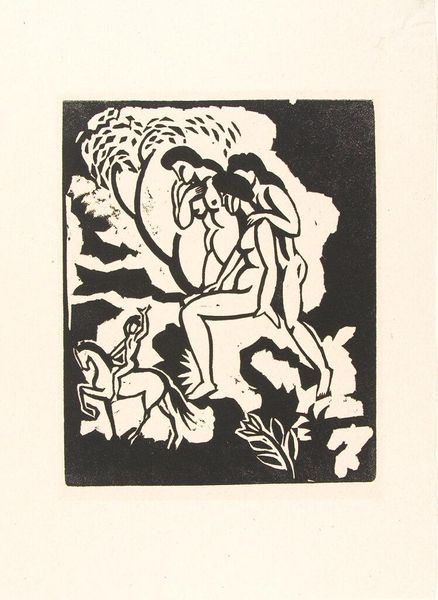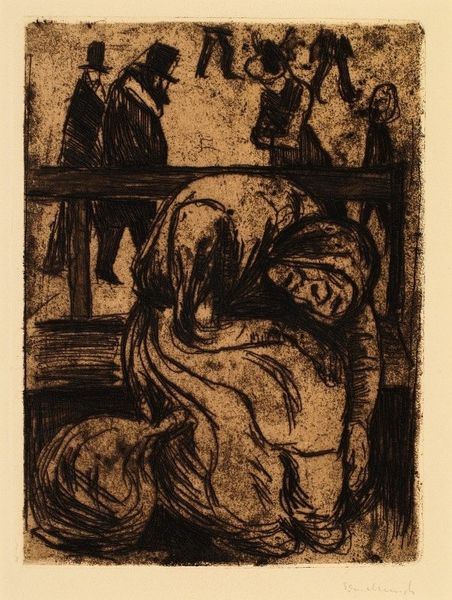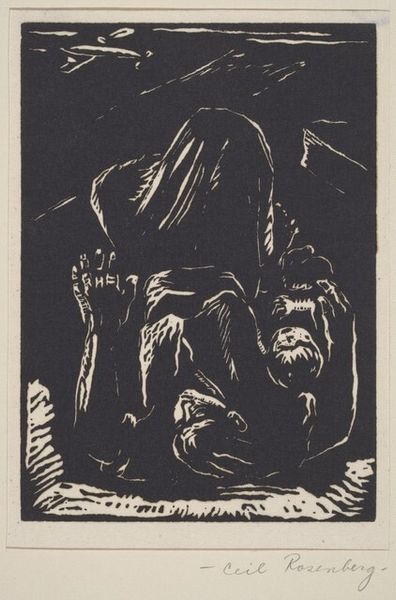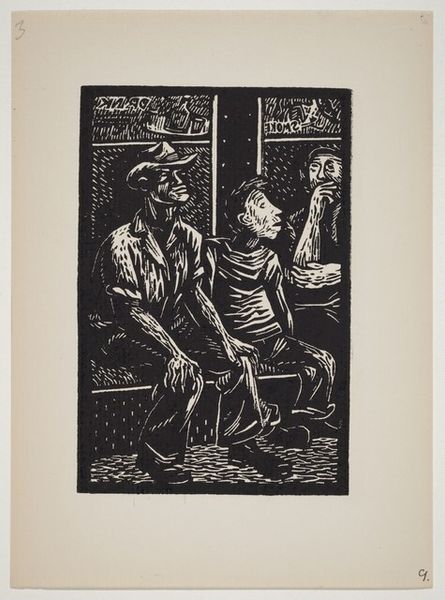
Copyright: CC0 1.0
Editor: Here we have Ernst Barlach’s woodcut, "Ein braver Mann muss gehn und betteln." The stark contrast and angular lines create a really unsettling mood. What do you see in this piece? Curator: I see a reflection of the social anxieties of the early 20th century. Barlach, working in a time of immense economic and political upheaval in Germany, often used his art to critique societal structures. Notice how the figures seem trapped within the dense, oppressive lines of the woodcut. Editor: The title translates to "A good man must go begging," which definitely adds another layer. Does the print comment on the public role of men? Curator: Precisely. It speaks to the displacement and desperation felt by many during that era, challenging the conventional notions of masculinity and societal worth. The act of begging becomes a potent symbol of systemic failure. Editor: It’s interesting to consider this work within its historical context. Thank you! Curator: My pleasure. It shows how art reflects and shapes public consciousness.
Comments
No comments
Be the first to comment and join the conversation on the ultimate creative platform.
